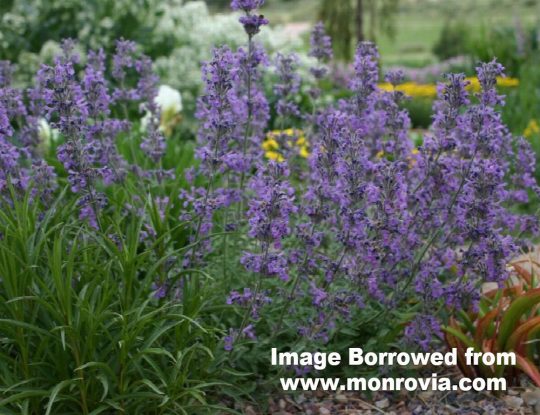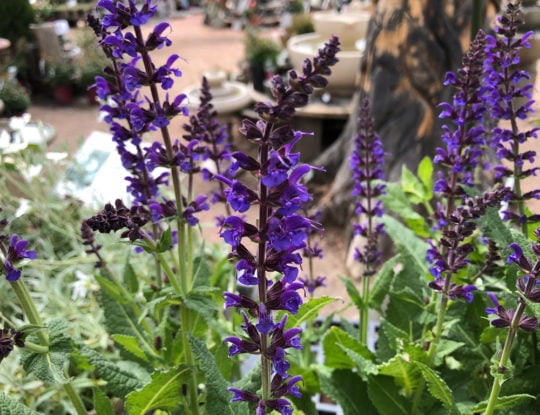Alex Tisthammer
With rising interest in helping the pollinators and conserving water, the demand for native plants in the horticulture industry is growing. While nurseries are working hard to meet the demand (here at Fort Collins Nursery we are expanding our propagation of native plants), it can be challenging for gardeners to find true natives in their area, especially in rural communities. Another obstacle to growing native plants is soil compaction, especially in residential areas. Heavily compacted clay soils are inhospitable for true natives unless the soil is heavily amended, which can be costly and labor intensive. Fortunately, there are many widely available plants that aren’t native but can still help cut down on water usage and provide food for pollinators. These can be placed in tough areas where it is hard to amend for drainage, or be dispersed amongst native plantings.

One of these versatile plants is catmint. Whenever I show a customer catmint at the nursery, I usually get a groan. But this zealous plant really does it all! It’s not picky about soils, helps with erosion control, and is drought tolerant. The tubular lavender flowers provide food for hummingbirds, bees, and butterflies. Thanks to its long bloom time, it is a reliable food source from late spring through fall, making it a necessity for anyone trying to attract bees to their yard for food production or beekeeping. While catmint is tolerant of light shade, it is a rockstar in blazing sun. Older varieties have a tendency to spread and can become a nuisance in certain situations (hence the groaning) but ‘Walker’s Low’ and its low-growing cousin ‘Junior Walker’ are non-spreading varieties. Another petite variety, ‘Little Trudy,’ is sterile and won’t spread at all.

Also widely available in virtually every nursery is German Bearded Iris. Sharing its name with the Greek goddess of rainbows, this plant comes in almost every color under the sun. Their sparkling folds and layers of petals appear in late spring, but will continue well into June, attracting hungry bumblebees to their pollen with their “landing strips” at the opening of the flower. The spiky gray green foliage is stately and architectural, providing a lovely backdrop to other smaller plants when not in bloom. They are not picky with soils either, as long as the site is sunny and the rhizomes aren’t sitting in soggy soil. They outlast most other plants when they are happy, even through periods of drought. As an added bonus, German Bearded Iris are exceptionally fragrant!

Aside from availability issues, growing native plants on the Colorado Front Range can be challenging due to residential soil composition. Unfortunately, many homes lack the ideal soil for successful native plantings. Our natural topsoil is often stripped away during the construction process, clay soil is brought to the surface up when the foundation and basement are built, and soil becomes compacted from construction equipment driving over it repeatedly. While native plants generally thrive in nutrient-poor soil, they do need sandy soils that will drain well. This is where those low water, non-native plants jump in and assist. Some non-native plants that are great options in this scenario are: hollyhocks, salvia, sedum, hens and chicks, or kashmir sage. Amending is still necessary for these plants to add nutrients into the soil, provide some aeration and drainage, but not nearly as much as what would be required for natives needing well draining soils.

Finally, if you want to explore more native options to pair with these suggestions, follow the link at the bottom of this article to a Colorado State University Extension fact sheet. Some of the natives that it references that tolerate clay soils are Goldenrod, Echinacea angustifolia, Harebells and Prairie Smoke Geum, all of which will be available at Fort Collins Nursery this year. Whether you are planting non-native, low water perennials mixed amongst easier to grow natives, or trying to make your yard’s soil more hospitable solely for natives, you are doing your part to save water, feed pollinators and increase wildlife habitat. Remember, even the smallest change can help the natural world that gives us so much every day!
Want to read up more on native herbaceous perennials? Follow the link below to the fact sheet by the CSU Extension office.
https://extension.colostate.edu/docs/pubs/garden/07242.pdf
Originally published on March 27th, 2024.
